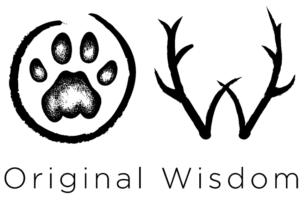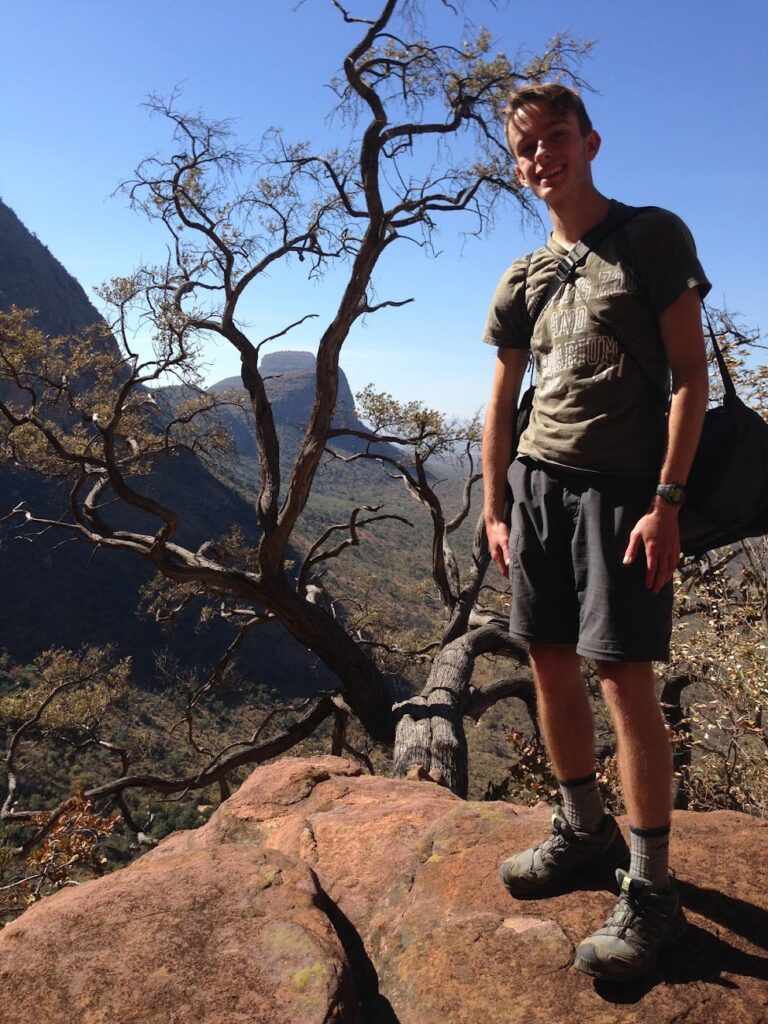September Answers to our Weekly Tracking Challenge
Answer list: a female solifuge burrow in South Africa, Cape buffalo dung in South Africa, a fallen wren nest in Poland, and European badger tracks in England.
The art and science of tracking develops creative and critical thinking skills, and curiosity and empathy, which also help us to better understand our place as caretakers of this beautiful world. The full expression of tracking includes more than just identifying tracks and signs. It also includes the interpretation of behaviours from tracks and signs, and the following and finding of animals (or people) using tracks and signs. Following and finding, or trailing, also builds confidence and leadership qualities in individuals, and teamwork among groups. Tracking requires us to really see the environment, and each other, and to reconnect to fundamental systems of living, which include knowledge of self, and connection to community (including non-human communities) and land. Tracking IS original wisdom. It’s both ancient, and new. Our ancestors tracked animals for food, clothing, shelter, and better quality of life. Today, we push the frontiers of tracking forward by including technology and new discoveries. One of the best things about tracking is that the “book of nature” is so vast that we can never know it all. It’s always exciting and always humbling.
Tracker Tuesdays, 8 Sept 2020, Invertebrate Tracks and Signs
Our Weekly Tracking Challenge came from Ngala Training Camp, home of Nature Guide Training, in the Greater Kruger area of South Africa. Who, and why?
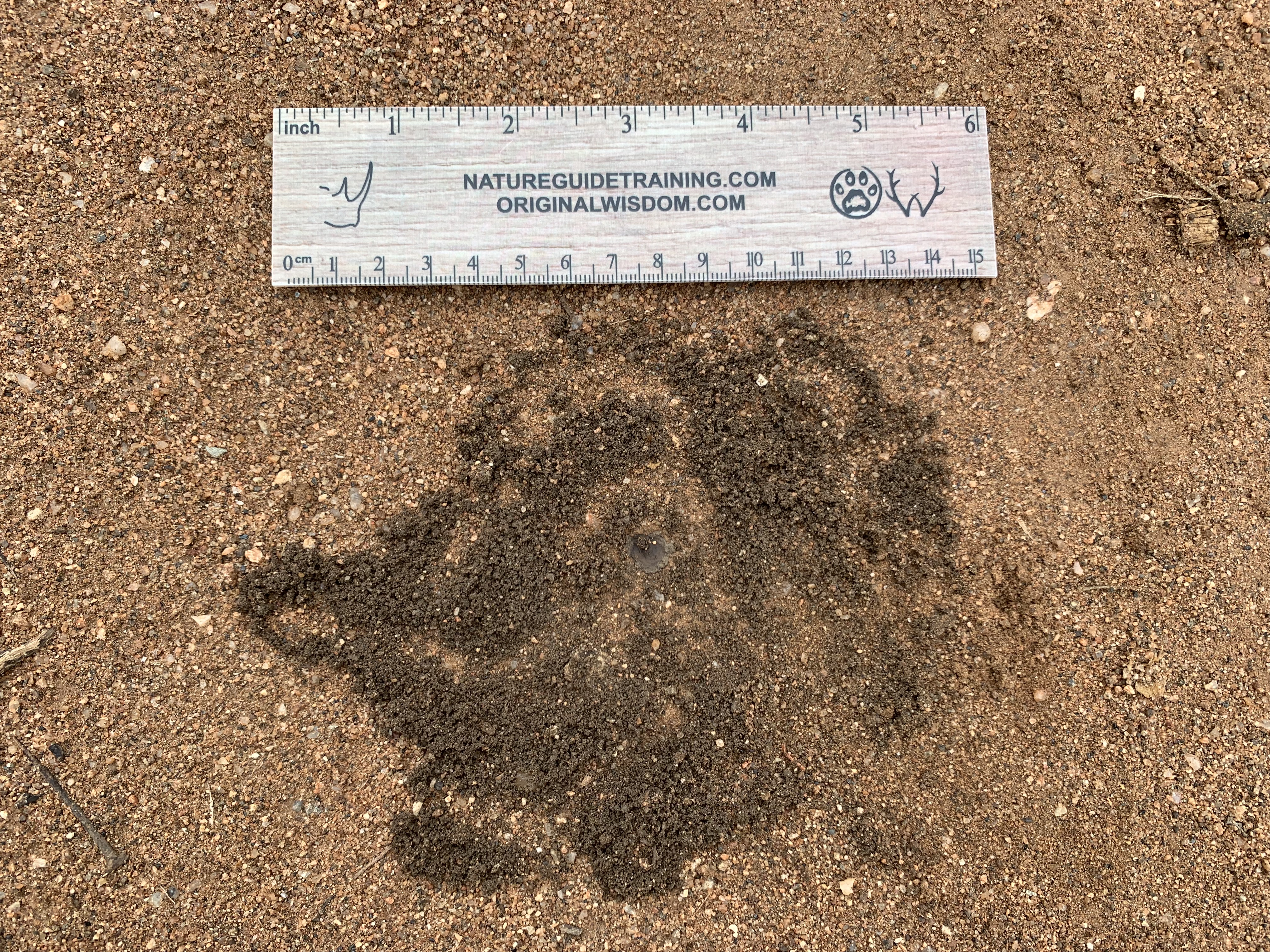
A female solifuge (sun spider) burrow in South Africa, photo by Kersey Lawrence.
Lots of folks had some wild guesses for this little-known sign, and Margaux Mathey from South Africa answered correctly and completely: “Solifuge burrowing. Excavated soil with abdomen drag marks going in all directions, but most importantly the mud/ ‘silk’ plug. (I use the term ‘silk’ because it’s not a true spider and it doesn’t have spinnerets, yet when the plug is broken I have definitely found silk like substances… and THAT was to me the most interesting part of seeing this signs in real life).”
Tracker Tuesdays, 15 Sept 2020, Mammal Tracks and Signs
Our Weekly Tracking Challenge comes from Ngala Training Camp, home of Nature Guide Training, in the Greater Kruger area of South Africa. Who, and why?
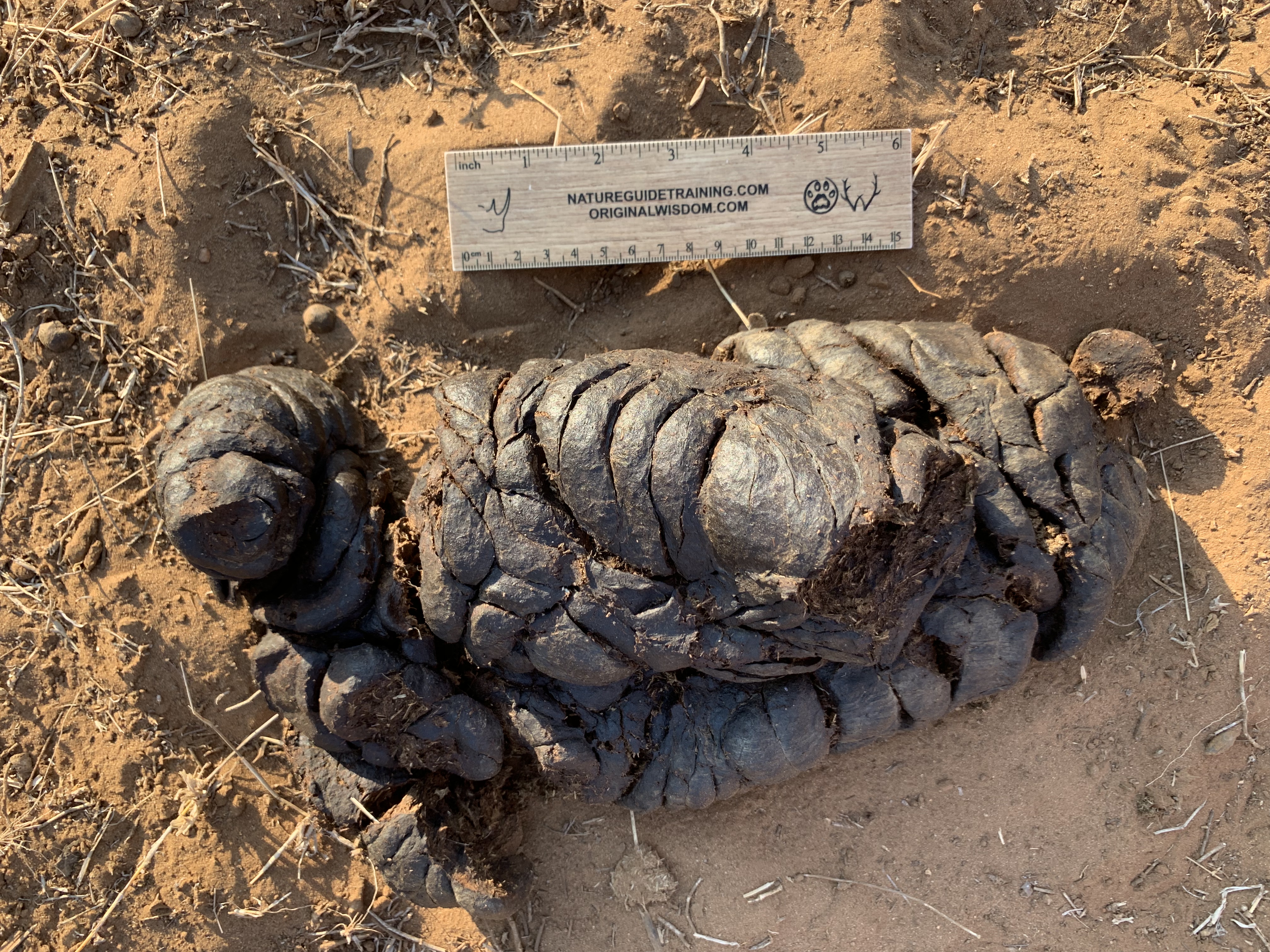
Cape buffalo dung in South Africa, photo by Kersey Lawrence.
This is a classic Cape Buffalo dung pile. They look like large pellets, folded into each other and resemble the dung of domestic cows (or domestic cows resemble their dung). On occasion, we have seen very atypical waterbuck and giraffe scats that resemble this, but the volume is much less.
Tracker Tuesday, 22 Sept 2020, Bird Tracks and Signs
Our Weekly Tracking Challenge comes from the old growth forests of Białowieża in Poland, where we went tracking with Daniel P. Hansche and his company Spurwander. Who, and why?
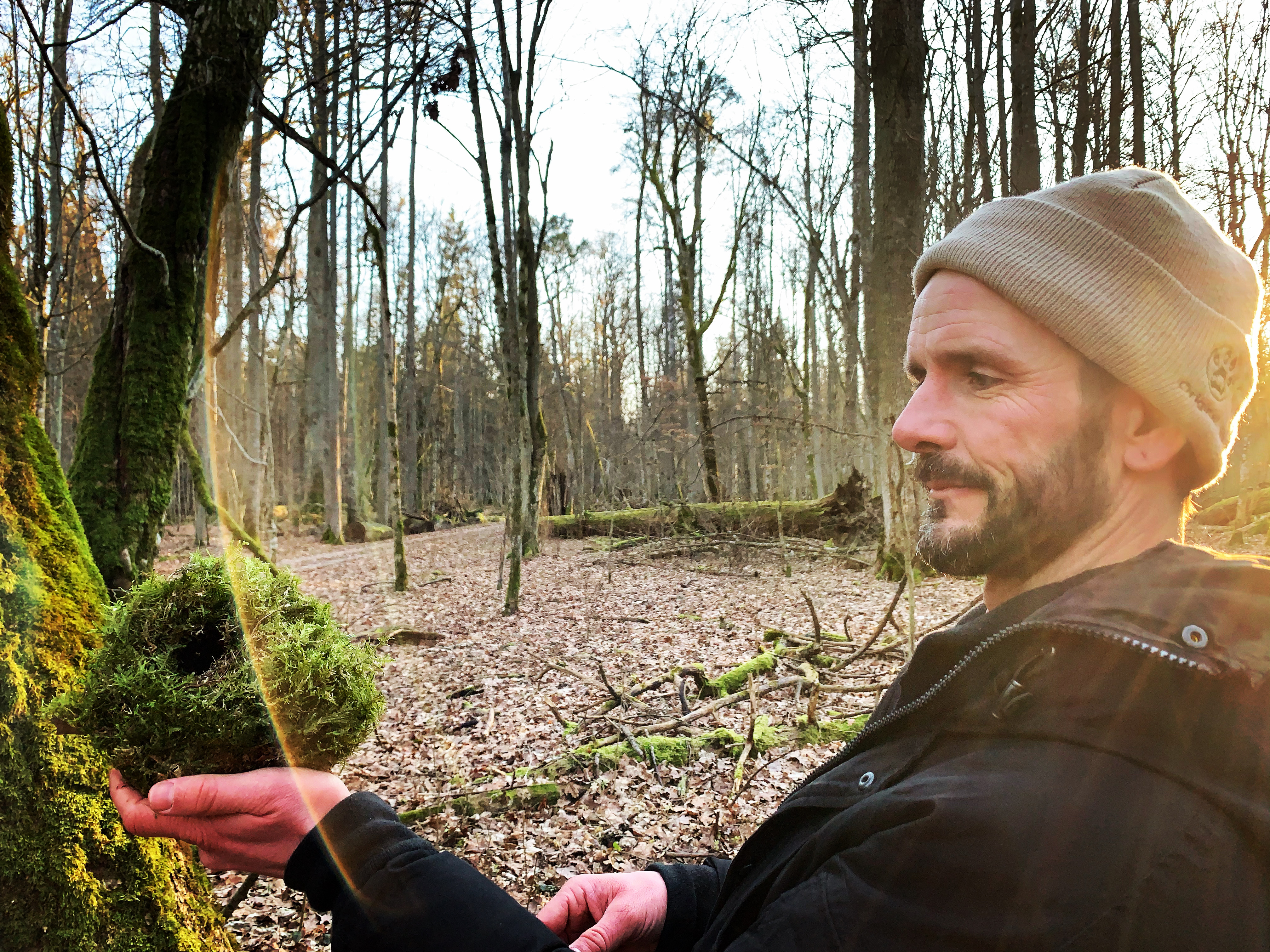
Dan Hansche holds a beautifully crafted wren nest that had fallen to the ground up to the light in Białowieża, Poland, photo by Kersey Lawrence.
Sandy Reed (Ohio, USA) said, “It reminds me of chickadee nests I see here in the US. They often have a lot of moss in them like that and are cavity nesters. It looks like it was in a tree cavity or something, the way it was shaped.” And I (Kersey) replied, “It had fallen from a tree, and was on the ground. It wasn’t in a cavity. It’s beautiful, though, isn’t it? We soooo wanted to “collect” it, but it was in the oldest intact old growth forest, and would have been unethical (and illegal) to remove.”
Chickadees are my favorite bird, so I had to give Sandy a shout-out for her attempt…
But, Søren DeCrane from Belgium answered this one correctly, with, “Wren? fluffy green moss, bowl shaped, exit normally is to the front for what I know.” Søren should know, as I believe this was one of the only questions he got wrong on a recent CyberTracker evaluation, and we all know that there is nothing like getting a question wrong to cement the knowledge into your memory! Well done, Søren!
Tracker Tuesdays, 29 Sept 2020, Mammal Tracks and Signs
Our Weekly Tracking Challenge comes from the South Downs National Park in West Sussex, England, where we went tracking with John Rhyder from the Woodcraft School. Who, and why?
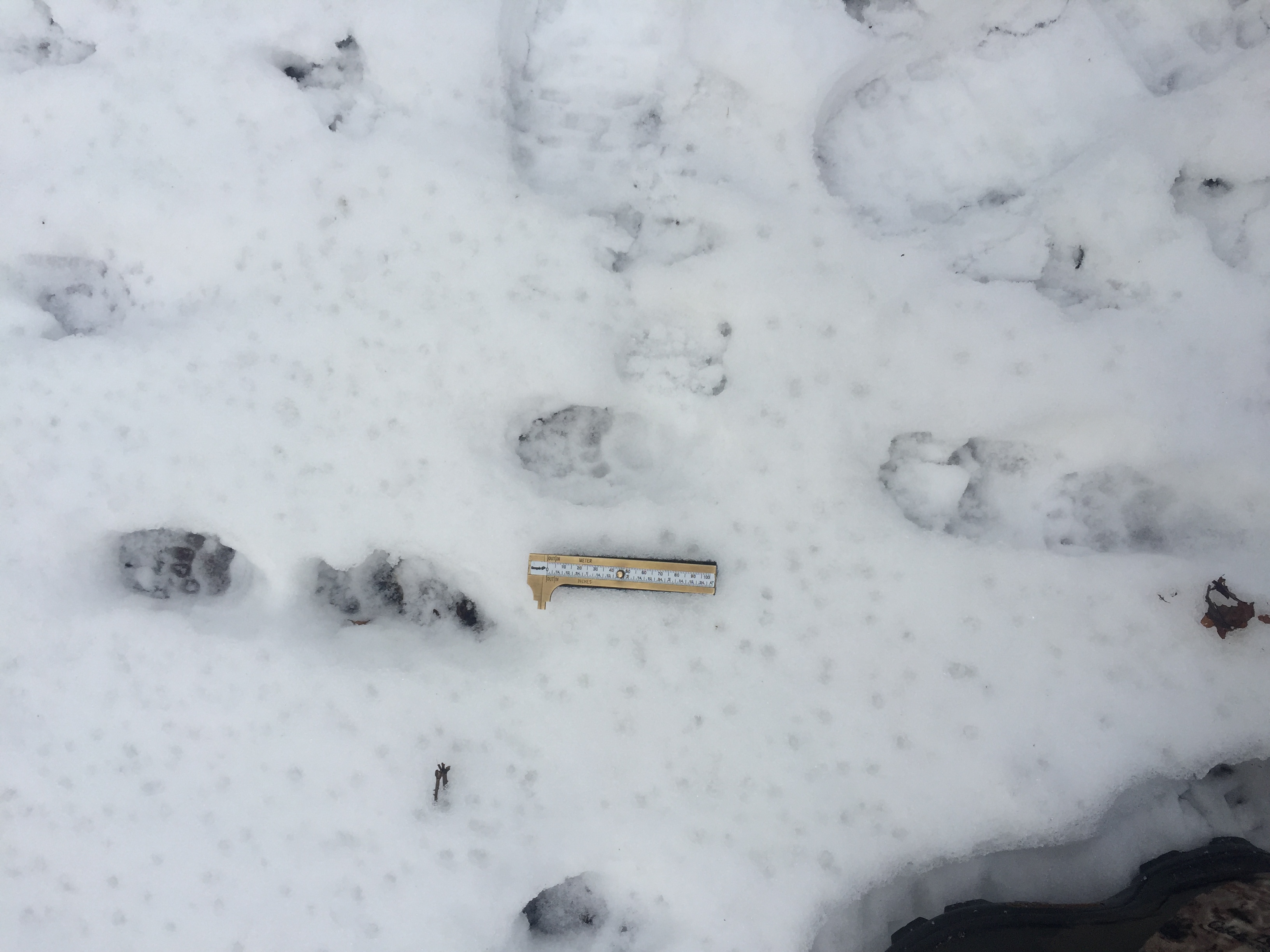
European badger tracks in fresh, wet snow in Sussex, England, Photo by Kersey Lawrence.
We had three correct answers for this one:
Christian Pompsch, Søren DeCrane (Belgium), and Mike Watling (CA., USA) all got it correct, Mike explained, “Looks like bear to me at first glance, but my answer is badger due to size and presentation of claws.”
Thanks to everyone who participated. Let’s keep learning together! If you have photos (with an explanation that you’d like to contribute), please contact me at kersey@originalwisdom.com – your contributions will be credited to you.
Interested in online and correspondence tracking courses? Visit us at TrackerMentoring.com!
#TrackerTuesdays, #weeklytrackingchallenge, #trackingisoriginalwisdom, #natureguidetraining, #cybertracker, #trackercertification, #trackermentoring, #alwaystracking, #environmentaleducation, #ecologicalliteracy, #ecologicalintelligence #wildlifetracking, #animaltracking, #tracksandsigns, #systemsthinking, #ecology, #nature, #science, #conservation, #sustainability, #resilience, #adaptation #thinkinglikeamountain #weareallconnected #BeMoreNeedLess #trackinginafrica #greaterkruger
Download our recommended reading list for trackers by signing up for our “News for Trackers” newsletter!
Our goal is NOT to be spammy with our newsletter. We’d just like to send occasional updates on upcoming programs and maybe some cool info on wildlife, people, and tracking!
Once the sign-up form has been submitted, you will be re-directed to the download page.
Download our recommended tracking book list (and some other resources). It’s specific to Southern Africa and North America, but, a good tracking book is helpful in any region as a starting point to learn how to look at track morphology and animal behavior.
[contact-form-7 id=”2892″ title=”Subscribe to the newsletter”]
